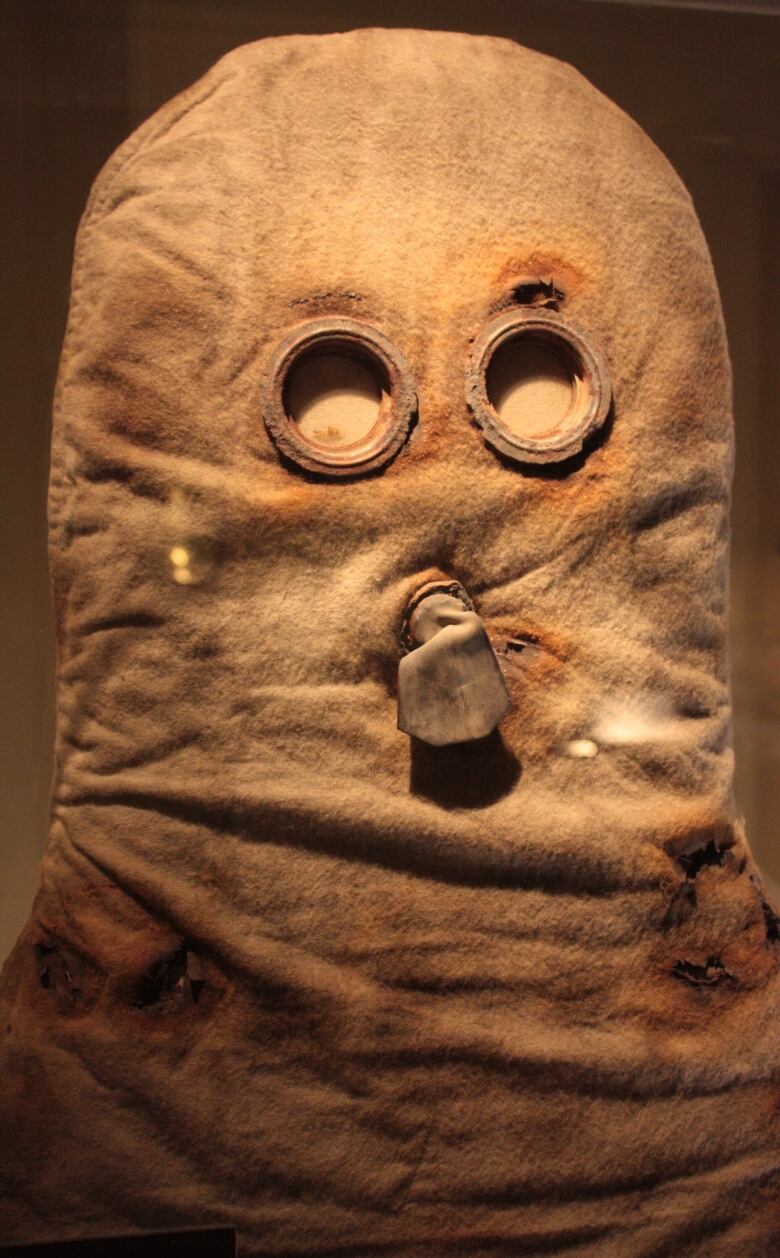Do We Have the Tools Agains This Plague Called Mobile
If today'south personal protective clothing is impersonal, its 17th-century equivalent was downright sinister, writes Ainsley Hawthorn.

Since the onset of the pandemic, doctors, nurses and other medical practitioners who find themselves working closely with COVID-19 patients take traded their familiar white coats and scrubs for plastic gowns, vinyl gloves, respirator masks and face shields.
A number of physicians have written about how much more difficult it is to build rapport with patients through the barrier of all this personal protective equipment. Some take even taken to wearing photographs of themselves on their gowns to help their charges, many of whom are facing a life-or-death struggle, feel less alienated, less alone.
Our modern equipment, though, has nothing on the medical garb of the Renaissance. If today'due south protective wear is impersonal, its 17th-century equivalent was downright sinister.
Even if you've never heard of a plague doctor, you've almost certainly seen an epitome of one: an imposing figure in an ankle-length cloak, a wide-brimmed lid and, about strikingly, a beak-shaped mask.
Far from your outgoing family unit physician, the plague doctor looks similar something out of a nightmare. His outfit, though, was actually an early example of personal protective equipment.

The plague, an illness caused by a bacterium called Yersinia pestis, circulated Eurasia and North Africa for thousands of years, occasionally exploding into devastating pandemics that killed millions. During the late Center Ages and the Renaissance, European cities employed plague doctors — physicians who were tasked with treating plague victims, and plague victims merely, to avoid spreading the affliction.
Tending to plague patients paid well only was risky business. Of 18 plague doctors who worked in Venice during the Blackness Decease of the 14th century, 5 died and 12 fled.
French regal physician Charles de Lorme believed there must be steps that could be taken to brand the occupation of plague dr. safer. He was practising medicine at the top of the Scientific Renaissance, when scientific principles were being applied to solve a wide range of issues. Why non use the advances that had been made in the field of medicine to protect doctors themselves?

In 1619, de Lorme had an thought for a head-to-toe protective garment that would shield doctors working with plague patients from infection. The garb included boots connected to breeches, a shirt tucked in at the waist, and gloves, with an overcoat worn over the unabridged outfit. Made entirely of wax-coated leather and synthetic so none of the physician'due south skin would be exposed, this outfit would exist impervious to body fluids.
The about absorbing characteristic of the ensemble was the birdlike mask. If you run into someone dressed like a plague dr. today, their mask will typically be a long, white bend sculpted from papier-mâché. These mod masks are based on the Doctor della Peste costumes from Italian Commedia dell'Arte and the annual Venetian Funfair, where the plague doctor became a prominent character.
The original plague physician masks, on the other paw, the ones worn past physicians, were fashioned from leather like the balance of the doctor's protective gear and had a much less ornamental appearance. More than anything else, they resembled the early on gas masks or gas hoods that were used in Earth State of war I, soon subsequently their invention by Newfoundlander Cluny Macpherson.

The 17th-century medical devices were hoods that covered the medico's entire head and overlapped his overcoat at the base of the neck. They had drinking glass lenses over the optics and a cone-shaped protuberance over the nose and mouth with two small holes on either side to let air in.
De Lorme, of class, invented this protective equipment long before we discovered that germs and microbes are responsible for the spread of contagious disease; withal, information technology was probably at least somewhat successful in safeguarding doctors against illness.
At the time of De Lorme's innovation, the most popular explanation for illness epidemics was miasma theory, which posited that outbreaks were caused past noxious vapours in the air. These fumes, produced past rotting waste material or stagnant water, were thought to explain why many people in the same vicinity would autumn ill around the same time.
Still, despite the prominence of miasma theory in the medical customs, even laypeople could see that the more than closely someone interacted with a plague victim, the more probable they were to take ill themselves. In the 1500s and 1600s, some scientists began to recall that diseases like plague might be spread past tiny particles that a ill person exhaled or that sloughed off a sick person's torso.
The plague doctor's ensemble responded to both of these theories of infection. The impenetrable clothing prevented the doctor from coming into contact with whatsoever contagious particles, and the tip of the mask'south "neb" was filled with a mixture of herbs meant to purify the air the doctor was breathing.

The types of plague that were circulating in the 17th and 18th centuries, when the plague md outfit was in utilise, were spread mostly by airborne respiratory aerosol, like to COVID-nineteen. Although the beaked mask was no North-95 respirator, it might have slightly reduced the dr.'southward chances of inhaling these droplets.
More than significantly, the interconnected leather garments would have prevented plague bacteria from touching the doctor's skin, whence they could afterward exist transported to his rima oris, nose and optics. Plague doctors also carried a rod that they used to examine patients from a prophylactic altitude, in a kind of enforced concrete distancing.
Whatever its effectiveness, the plague md's getup popularized the idea that protective clothing could play a role in preventing the spread of illness and paved the way for the protective equipment our medical professionals rely on in today'south pandemic.
Read more from CBC Newfoundland and Labrador
finkbrinnowere1990.blogspot.com
Source: https://www.cbc.ca/news/canada/newfoundland-labrador/renaissance-ppe-plague-doctors-1.5687152
0 Response to "Do We Have the Tools Agains This Plague Called Mobile"
Post a Comment